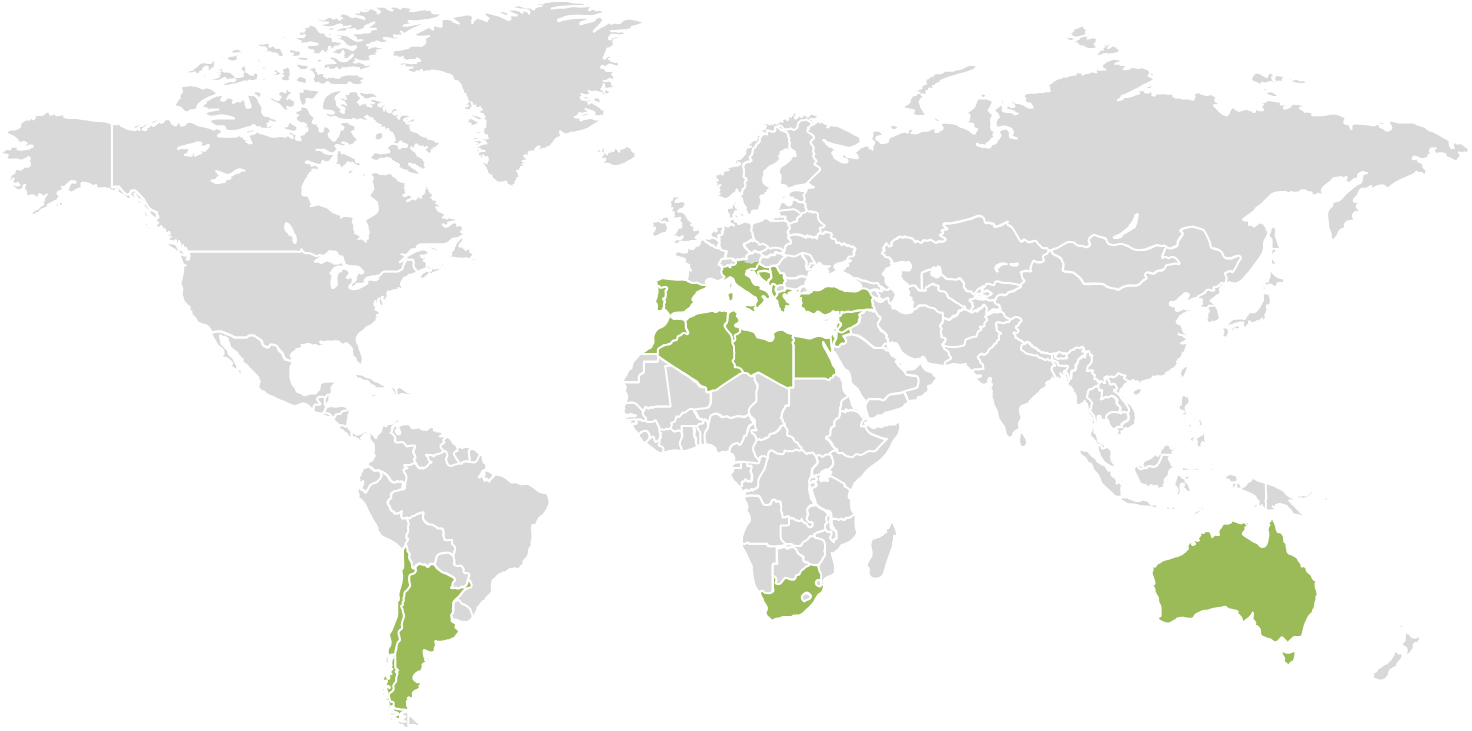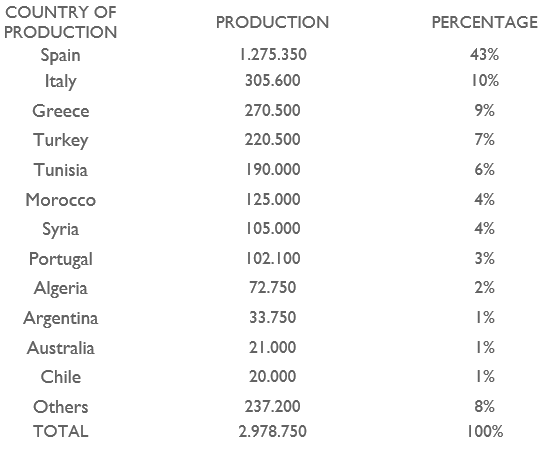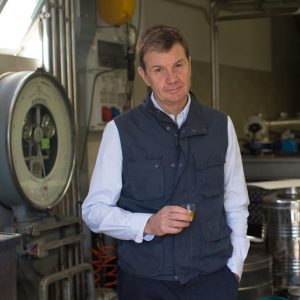The new Olive Oil’s Geography

Average values of the last two oil productions (in tonnes)
2017/2018 – 2018/2019

In the last ten years the olive and olive oil industry has gradually changed, mostly due to increasing reliance on the so-called “super intensive systems” which improves production efficiencies thus allowing the market to keep up with a growing consumption of olive oil around the world at competitive price.
High density olive groves, with between 1500 and 2500 trees per hectare, began to take foot in Spain in the 1990s. The model was designed with the aim of total mechanisation, from pruning to harvesting, which is executed with the use of over-the-row harvesters in continuous operation.
Besides reducing the cost of manual labour, other factors contribute to make this model sustainable: an earlier entry into production of the olive groves, high production rates, reduction of the natural phenomenon of alternate bearing.
Especially prevalent in Spain, this super-intensive model was also replicated in parts of north Africa (mostly Tunisia and Morocco) and in some countries of the southern hemisphere that previously did not have a strong olive farming tradition, such as Chile, Argentina, Australia and South Africa, where climatic conditions are similar to those in the Mediterranean basin.
The model was not as successful in Italy mainly due to structural factors but most of all because the super-intensive model is only applicable to a limited number of olive varieties (cultivars), of which only the Spanish Arbequina and Arbosana and the Greek Koroneiki have achieved full validation.
Considering that the added value of Italian olive growing is the rich biodiversity (more than 350 cultivars located in specific “terroirs”), it would be very inconvenient, for Italian olive growers, to widespread the use of super-intensive system using non-native varieties.
The graphs below show an overall growth in world production of 63% (around 1200 tons), over the last 17 years. Approximately 50% of the increase has mainly benefitted Spain (due to the widespread use of the super-intensive systems); Italy has lost half of its quota with a 27% decrease in volumes, while Greece has reduced its quota but maintained volumes. Turkey occupies fourth place with a volume that has tripled in size. Considerable growth is visible in the quotas of new producers in the southern part of the world: Argentina, Australia and Chile.

